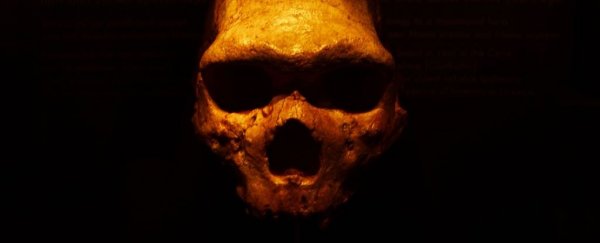They disappeared about 40,000 years ago. Despite their rich culture, their robust anatomy, and the many similarities we shared, Neanderthals vanished from the face of the Earth. Why?
The reasons have long been debated, with many hypotheses suggesting that competition with the potentially superior anatomically modern humans (AMHs) drove the Neanderthals' decline. But new research indicates that might not be so.
"Did Neanderthals disappear because of us?" ask the researchers, led by bioscience engineer and philosopher Krist Vaesen from the Eindhoven University of Technology in the Netherlands.
"No, this study suggests. The species' demise might have been due merely to a stroke of bad, demographic luck."
In their study, Vaesen and his team ran population simulations for Neanderthal societies of various starting sizes (from 50 individuals to 100, 500, 1,000, or 5,000), ignoring the hypothetical factor of competitive interactions with the direct ancestors of modern humans.
While the historical impact of that long-ago conflict was discounted, the researchers included in their simulation three elements known to have a big effect on small populations.
These included the impacts of inbreeding, Allee effects (a biological phenomenon where a small population reduces the average fitness of individuals in the group), and stochasticity: random demographic fluctuations in births, deaths, and sex ratio, which end up putting smaller groups at a disadvantage in terms of overall survival.
According to the researchers, these factors alone – totally aside from any hypothetical clashes with other ancient humans for resources – were enough to result in Neanderthal extinction over the simulation timeframes of up to 10,000 years.
"Our results support the hypothesis that the disappearance of Neanderthals might have been the result of demographic factors alone, that is, the result merely of the internal dynamics that operate in small populations," the authors explain in their paper.
"Our results are consistent with a scenario in which a small population of Neanderthals persists for several thousands of years, and then, due to a stroke of bad luck, disappears."
Their results make sense, considering how small ancient human species' populations once were: Neanderthals are thought to have numbered in mere thousands, within a range of 5,000 to perhaps 70,000 individuals at their peak.
Further, the team speculates that anatomically modern humans might have played a role in aiding this natural, randomised decline of the Neanderthals – not through competing over resources, but by acting as a sexual distraction (as we well know we did).
In other words, due to cross-breeding between ancient humans and Neanderthals, there may have been fewer opportunities for Neanderthals to keep up their already scant, weakened, and genetically vulnerable populations.
"The mere interspersal of AMH sub-populations between Neanderthal sub-populations reduced the opportunities for intrabreeding and migratory activity among the latter," the researchers explain.
"As such, the presence of modern humans in Eurasia would have accelerated a process that, at some point, was likely to have occurred anyway."
The findings are reported in PLOS One.
